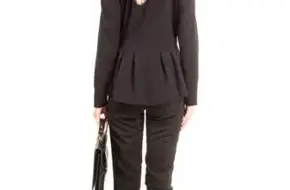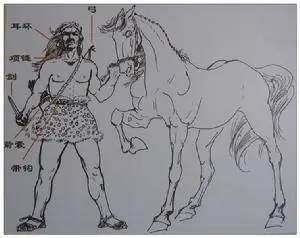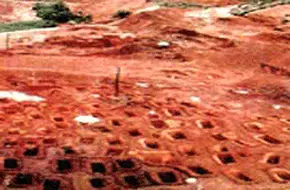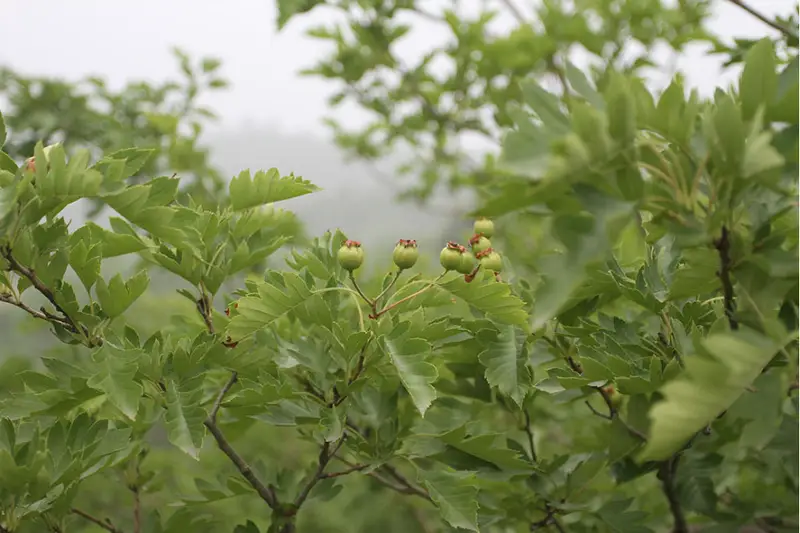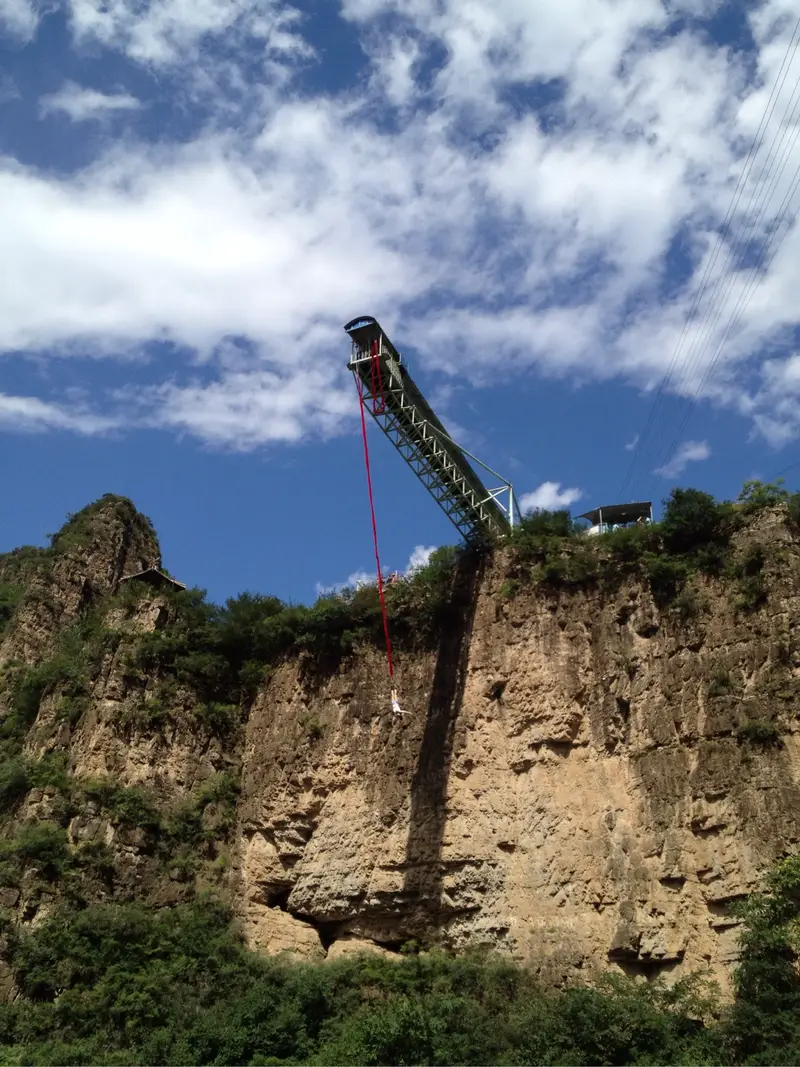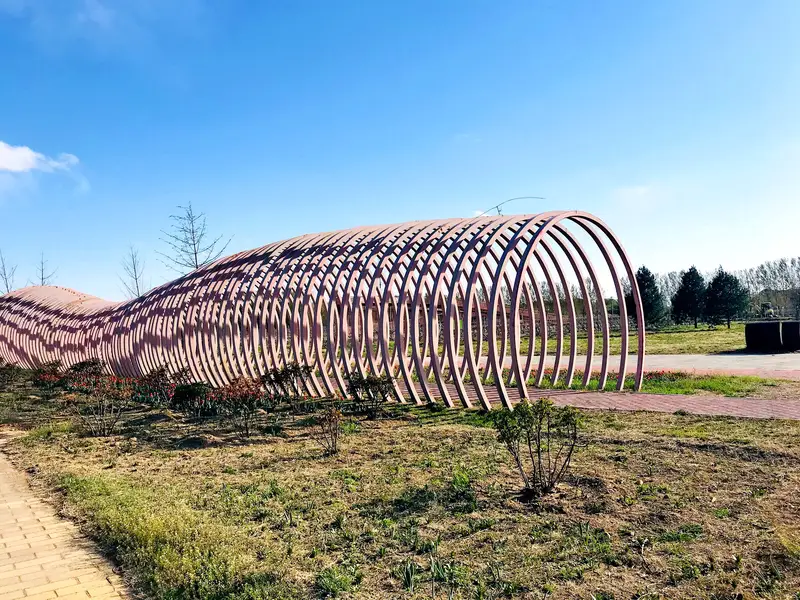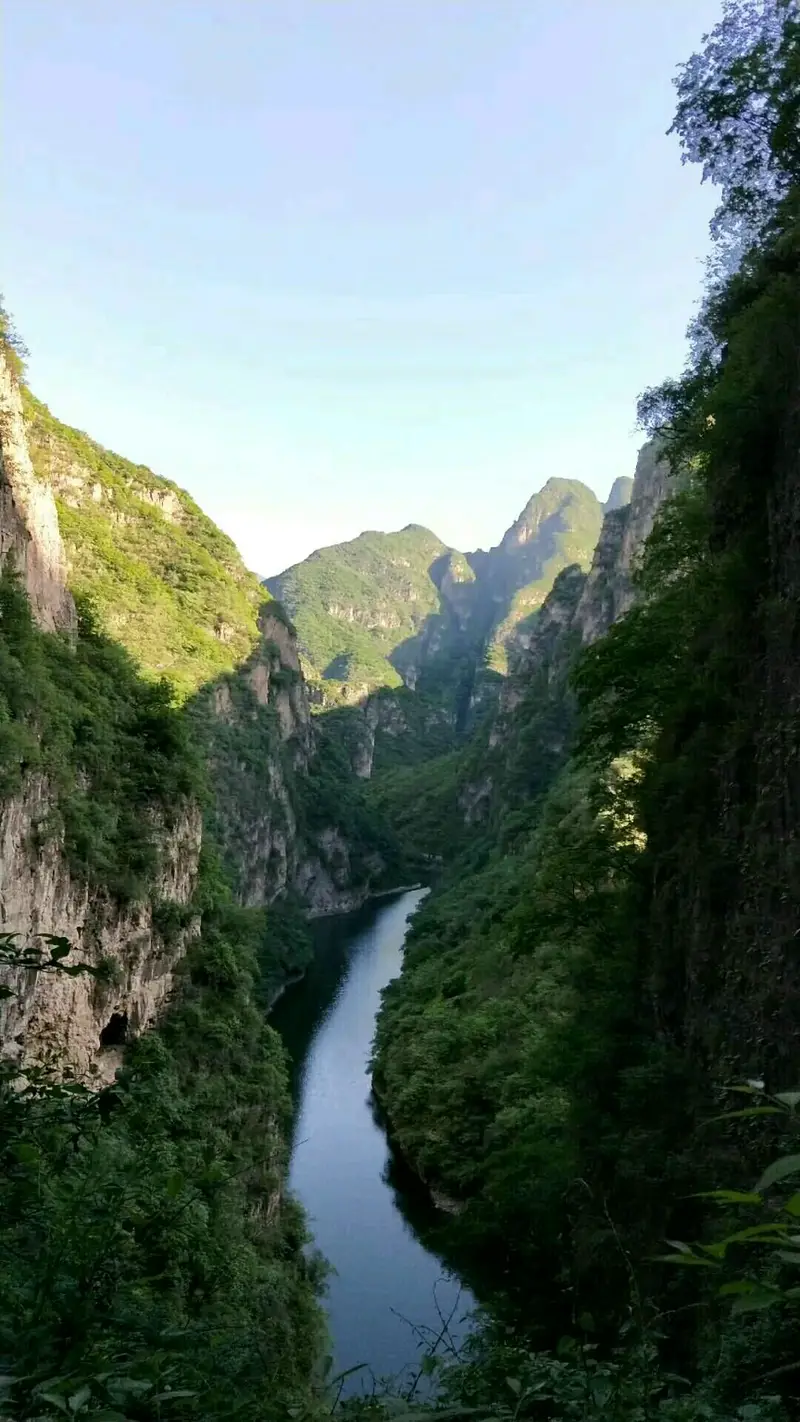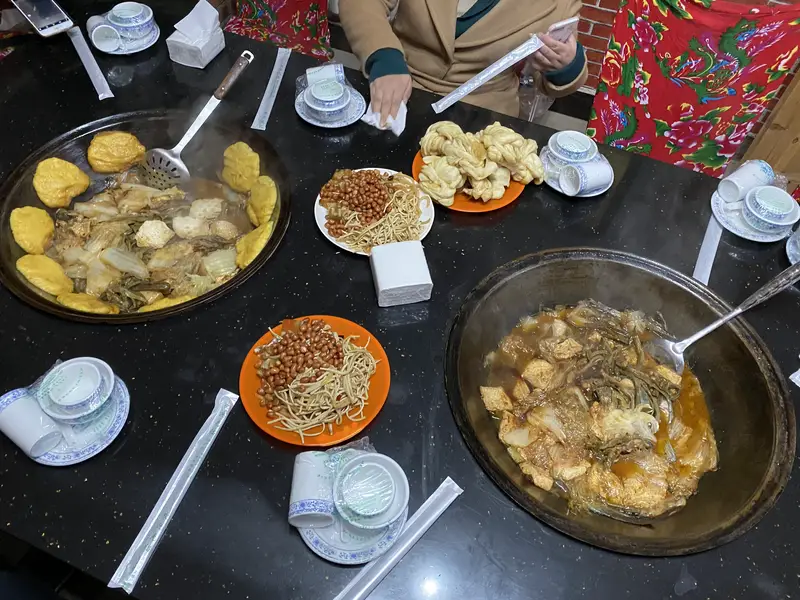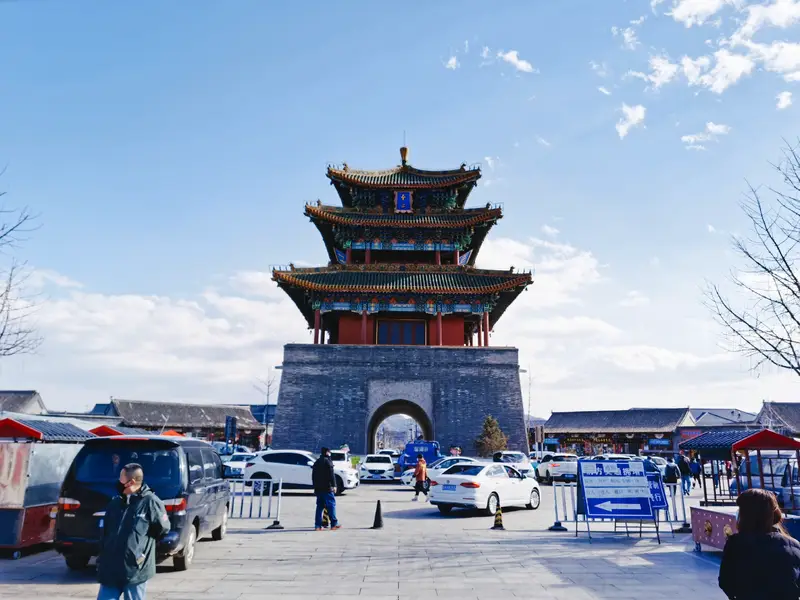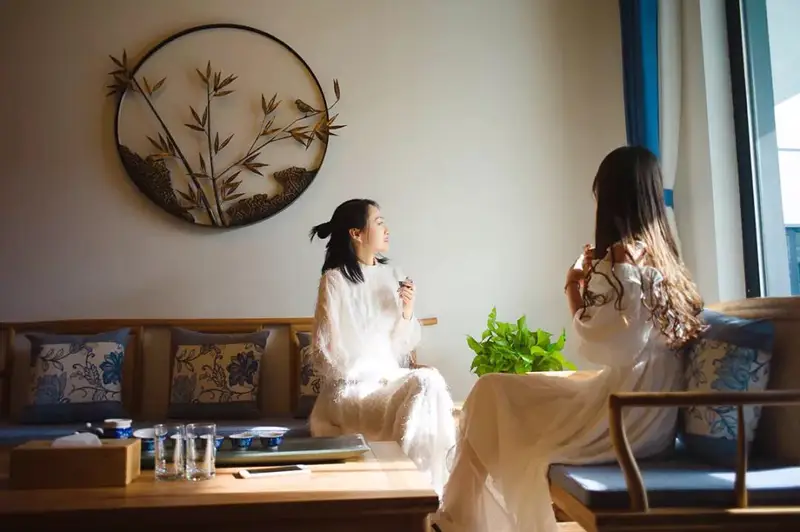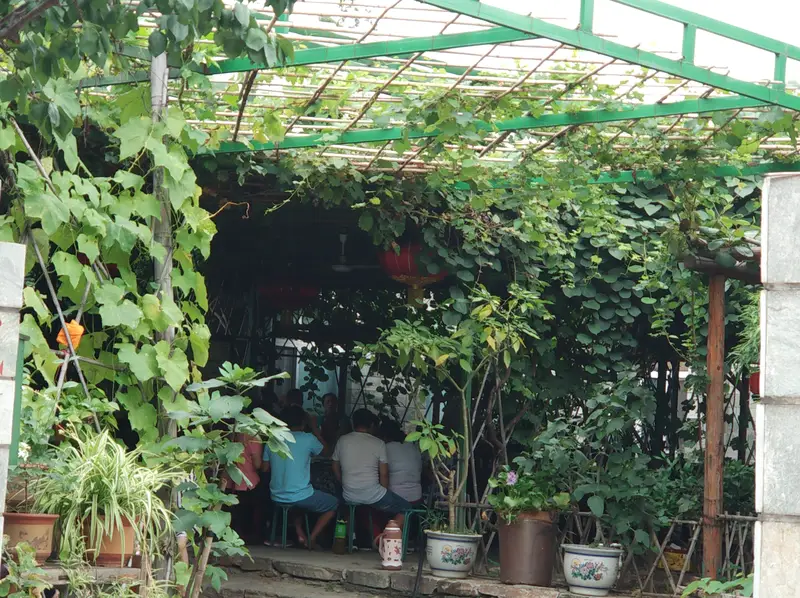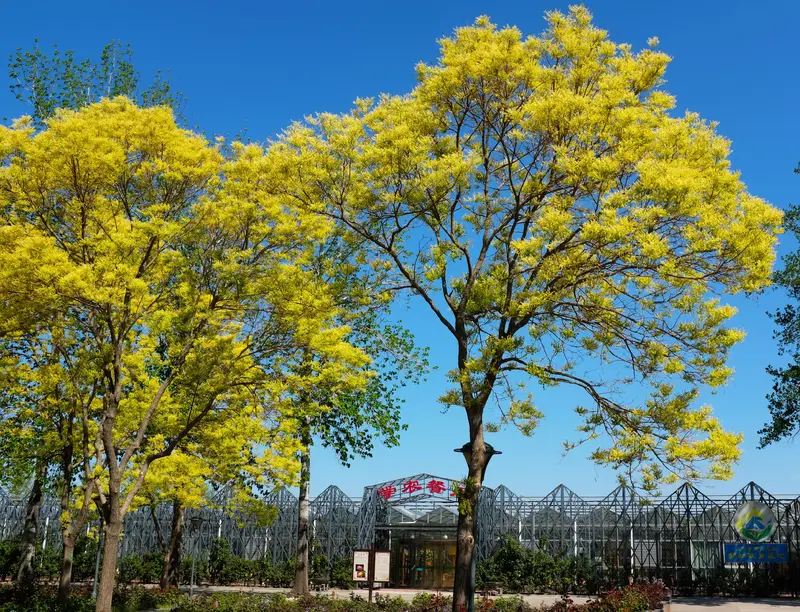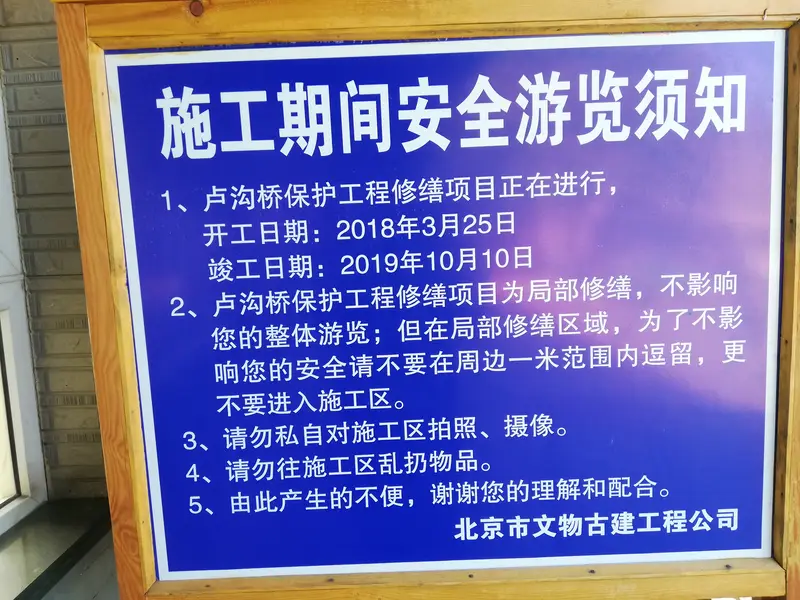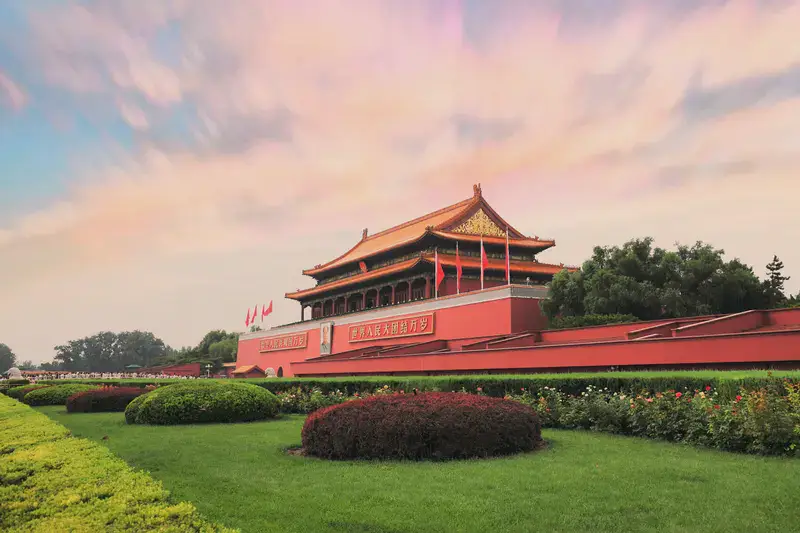Shanrong Cultural Exhibition Hall sits quietly at Yuhai Road, Yuhuangmiao Village in Zhangshanying Town, Yanqing District—about 13 kilometers northwest of downtown Yanqing. To reach it from central Beijing, you’ll need to venture into the mountainous northern fringes of the city. The museum lies at the foot of Fuzhong Mountain, surrounded by rolling hills and quiet villages.
By car: It’s a ~70-minute drive from downtown Beijing via the G6 expressway, followed by local roads. By public transport: Take the subway to Beijingzhang Line’s Yanqing Station, then transfer to a local bus (check routes in advance, as options are limited). For a more scenic route, consider renting a bike and cycling through the countryside—just note the hilly terrain!
Natural Scenery: A Mountainside Retreat
Nestled against Fuzhong Mountain, the exhibition hall feels like a hidden gem. The area is lush with greenery, especially in spring and summer when wildflowers blanket the slopes. Nearby, you’ll find winding trails perfect for light hikes, with views of the surrounding valleys. The air here is crisp, and on clear days, you can spot distant peaks that frame the sky. It’s a far cry from Beijing’s urban hustle—ideal for visitors wanting to blend culture with nature.
Cultural Treasures: Ancient Mysteries Unearthed
Shanrong Cultural Exhibition Hall isn’t just any museum—it’s China’s first-ever museum dedicated to an ancient minority group, the Shanrong people. In 1984, archaeologists stumbled upon over 600 burial mounds here, dating back to the 7th–4th centuries BCE. After a five-year dig, they unearthed over 10,000 artifacts, including gold jewelry, bronze tools, and intricately painted pottery.
The museum’s unique twist? It’s built atop the original burial site, so you’re literally walking where ancient Shanrong tribes once rested. Highlights include reconstructed tombs, a massive bronze cauldron, and delicate jade pendants. History buffs will love how the exhibits trace the daily lives, trade networks, and beliefs of this long-forgotten culture.
Practical Tips: What to Expect
- Tickets: Very affordable (around 20-30 RMB), and sometimes free for kids or seniors. Check latest prices online.
- Hours: Open daily from 9 AM–5 PM (last entry at 4 PM). Closed on Mondays.
- Guides: English-speaking guides are available for hire if you want deeper insights. Otherwise, the plaques are bilingual.
- Tours: Join a guided tour to spot details you’d miss alone—like hidden symbols on artifacts or the significance of tomb layouts.
Facilities: Simple but Functional
Don’t expect luxury—this is a small, specialized museum. That said, it has clean restrooms, a modest gift shop with local handicrafts, and a cozy café serving tea and snacks. The outdoor seating offers nice mountain views. If you’re driving, there’s a free parking lot. For those staying overnight, nearby Yuhuangmiao Village has quaint homestays and farmhouse restaurants.
The Experience: Step Back in Time
Visiting Shanrong Cultural Exhibition Hall feels like uncovering a lost chapter of Beijing’s history. Unlike crowded tourist spots, it’s peaceful—you might even have the museum to yourself. Wander through glass-floored walkways that reveal preserved tombs beneath your feet. Kids might enjoy the interactive displays, like reconstructing Bronze Age tools.
Best for: History lovers, road-trippers, and anyone curious about China’s ancient minorities. Pair it with a visit to Sihailong Park in Yanqing for a full day of culture and nature. Just remember to wear comfy shoes—there’s plenty to explore both indoors and out!
This off-the-beaten-path spot proves that Beijing’s history isn’t all about palaces and walls. At Shanrong Cultural Exhibition Hall, you’ll connect with the region’s deeper roots—and leave with stories few tourists know.

